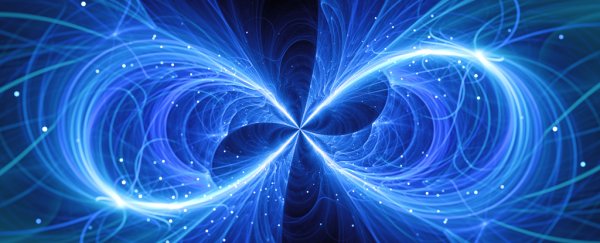Causality is one of those difficult scientific topics that can easily stray into the realm of philosophy.
Science's relationship with the concept started out simply enough: an event causes another event later in time. That had been the standard understanding of the scientific community up until quantum mechanics was introduced.
Then, with the introduction of the famous "spooky action at a distance" that is a side effect of the concept of quantum entanglement, scientists began to question that simple interpretation of causality.
Now, researchers at the Université Libre de Bruxelles (ULB) and the University of Oxford have come up with a theory that further challenges that standard view of causality as a linear progress from cause to effect.
In their new theoretical structure, cause and effect can sometimes take place in cycles, with the effect actually causing the cause.
The quantum realm itself as it is currently understood is inherently messy.
There is no true understanding of things at that scale, which can be thought of better as a set of mathematical probabilities rather than actualities. These probabilities do not exactly lend themselves well to the idea of a definite cause and effect interaction between events either.
The researchers further muddied the waters using a tool known as a unitary transformation.
Simply put, a unitary transformation is a fudge used to solve some of the math that is necessary to understand complex quantum systems. Using it makes solving the famous Schrodinger equation achievable using real computers.
To give a more complete explanation requires delving a bit into the "space" that quantum mechanics operates in.
In quantum mechanics, time is simply another dimension that must be accounted for similarly to how the usual three dimensions of what we think of as linear space are accounted for. Physicists usually use another mathematical tool called a Hamiltonian to solve Schrodinger's equation.
A Hamiltonian, though a mathematical concept, is often time-dependent. However, it is also the part of the equation that is changed when a unitary transformation is introduced.
As part of that action, it is possible to eliminate the time dependency of the Hamiltonian, to make it such that, instead of requiring time to go a certain direction (ie., for action and reaction to take place linearly), the model turns more into a circle than a straight line, with action causing reaction and reaction causing action.
If this isn't all confusing enough, there are some extremely difficult to conceive of implications of this model (and to be clear, from a macro level, it is just a model).
One important facet is that this finding has little to no relevance to everyday cause and effect.
The causes and effects that would be cyclical in this framework "are not local in spacetime", according to the press release from ULB, so they are unlikely to have any impact on day to day life.
Even if it doesn't have any everyday impact now, this framework could hint at a combined theory of quantum mechanics and general relativity that has been the most sought after prize in physics for decades.
If that synthesis is ever fully realized, there will be more implications for everyday life than just the existential questions of whether we are actually in control of our own actions or not.
This article was originally published by Universe Today. Read the original article.
